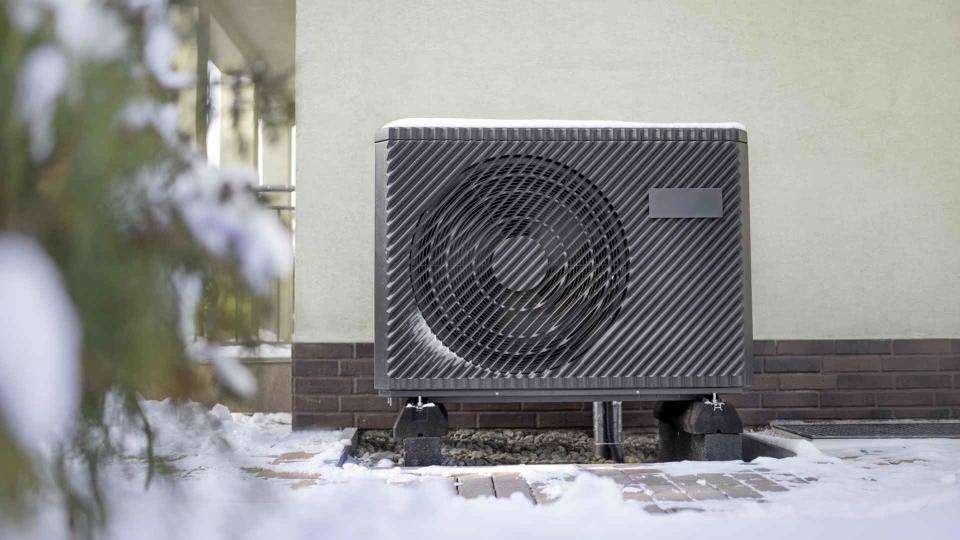Winter Heating: How To Choose the Best System for Your Home at the Right Price

With the federal government still offering incentives for energy efficient home improvements, including home heating systems, it might make sense to upgrade your home heating system as winter takes hold.
6 Frugal Habits You’ll Actually Enjoy: Have Fun and Save Money
Find: Pocket an Extra $400 a Month With This Simple Hack
But what kind of heating system will deliver the most bang for your buck? Here are five options with the pros, cons, and estimated costs of each.
Forced Air Furnace
A forced air furnace runs using oil, electricity, natural gas or propane. The furnace produces heat, which is pumped through ducts in your home. Forced air systems heat homes quickly as the air circulates through each room.
In general, these heating systems are fairly energy efficient, although it depends on the source of power. A system powered by natural gas will cost less to run than one powered by electricity, unless you have solar panels on your home.
MSN.com reported that a forced air furnace will cost roughly $4,735, although costs may be higher if you don’t have existing duct work.
Also: Get Rid of These Devices This Winter That Add Hundreds to Your Electricity Bill
Heat Pump
Heat pumps are an extremely energy efficient home heating method. The federal government is offering up to $3,200 for the installation of a heat pump system in your home, according to EnergyStar.gov.
This system pulls warmth from the air, water, or ground near your home and distributes it through the home. In the past, heat pumps were not suitable for homes in cold-weather climates. They were better for regions, like the South, where temperatures did not drop too far below freezing, but residents might need a boost of warmth for a few months out of the year.
However, today’s systems have been shown to heat just as effectively in cold climates. According to BlocPower.io, global heat pump sales increased by 11% in 2022 — and certain models can even be used in colder Northern states like Maine.
A cold-climate heat pump system starts at roughly $5,000, according to EnergySage, but for areas that regularly experience freezing temperatures regularly, an effective heat pump system can cost up to $9,500.
An added benefit is that a heat pump can also double as a cooling system.
Boiler
A boiler system boils water and then sends hot water or steam through radiators to heat the home. The energy efficiency and cost to run these systems depend on what’s powering your boiler. The boiler may run on natural gas, oil, propane, or electricity depending on the system.
If you’re replacing the boiler heating system in your home with a newer model for energy efficiency, it can cost between $1,200 and $16,000, with the average cost falling at $7,398, according to Architectural Digest.
In-Floor Radiant Heating
Radiant heating systems reside under the floorboards of your home and provide comforting warmth from the ground up. Heat runs through hot water in a series of tubes in your subfloor to heat a room. Alternatively, some in-floor radiant heating systems use electricity to produce heat via mats or wires under the floor.
Radiant floor heating is energy efficient, working more efficiently than forced air systems, according to Green Wave Distribution. In-floor heating is also aesthetically pleasing, since it is an invisible solution underneath your floor. It can also add re-sale value to your home.
However, some radiant systems may not be effective enough to heat the entire home. A system might be used as supplemental heating in a bedroom or bathroom for added comfort.
Radiant heat can cost as much as $48,000 to install across an entire house, according to MSN.com.
Wood Stove
A wood stove is another form of supplemental heat, which may be adequate to heat a whole home in certain circumstances. A wood stove or a fireplace offers an energy efficient, affordable heating method. Forbes reported that a wood stove can cost between $1,500 to $5,000 to install, with the average price running between $3,000 and $5,000.
Choosing the Best System
The best heating system for your home depends on a variety of factors, including:
The existing system you have in place.
The climate in which you live.
Your budget.
Your desire for energy-efficiency.
Tax credits and incentives available federally and locally.
It’s best to speak to a professional contractor who can advise you — and to call around for several estimates before choosing an installer to ensure you’re getting the best service and value.
More From GOBankingRates
This article originally appeared on GOBankingRates.com: Winter Heating: How To Choose the Best System for Your Home at the Right Price

 Yahoo Finance
Yahoo Finance 